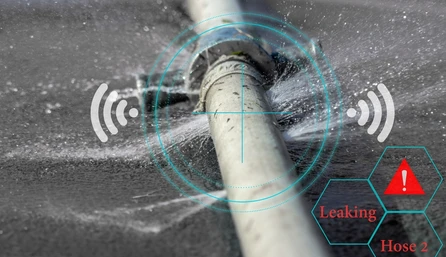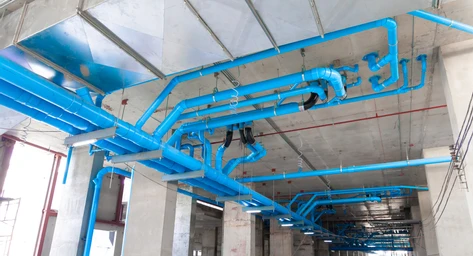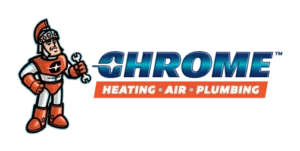Detecting Hidden Plumbing Leaks in Your Home
A hidden plumbing leak in your home can lead to severe damage, costly repairs, and wasted water, all without you realizing there’s a problem. Whether it’s a small leak behind the walls or under the foundation, early detection is crucial. This guide will walk you through the signs of hidden leaks, the damage they can cause, and how you can detect them before they become major issues. The Consequences of Hidden Plumbing Leaks Before diving into how to detect hidden plumbing leaks, it’s important to understand why they can be so damaging. A small, unnoticed leak can lead to significant consequences over time. Here are some of the problems that hidden leaks can cause: Structural Damage: Water damage weakens the structural integrity of your home. Leaks can lead to warping, cracking, or rotting of walls, floors, and even the foundation. Mold Growth: Water accumulation in hidden areas, such as behind walls or under floors, creates an ideal environment for mold growth. Mold not only causes damage to your home but can also pose serious health risks to you and your family. Increased Water Bills: A hidden leak, even a small one, can result in a significant increase in your water bill. Over time, this wasted water can add up to hundreds of gallons, driving up your utility costs. Damage to Personal Property: Leaks in ceilings or walls can lead to water dripping onto furniture, electronics, and other personal belongings, causing irreversible damage. Decreased Home Value: Water damage from hidden leaks can decrease the value of your home if left untreated. If you plan to sell your home, potential buyers may be wary of unseen water issues. Common Areas for Hidden Leaks Hidden leaks can occur in several places around the home. While some may be more obvious than others, all of these areas should be checked regularly: Under sinks and cabinets: These areas are often ignored, but plumbing connections can leak behind closed cabinet doors. Behind walls: Pipes running through walls are particularly vulnerable to small leaks, especially in older homes. Beneath flooring: Leaks from appliances or bathrooms can seep into the floors, leading to warping or buckling. Basement and crawl spaces: These areas are often damp, and leaks can go unnoticed for a long time if not regularly inspected. How to Detect Hidden Plumbing Leaks Knowing where leaks can occur is only half the battle. It’s equally important to understand how to detect these leaks before they cause significant damage. Here are some of the most effective methods for detecting hidden plumbing leaks: 1. Monitor Your Water Bill A sudden spike in your water bill, without any increase in water usage, is one of the most telling signs of a hidden leak. Compare your current water bill to past bills to spot unusual changes. Even small, slow leaks can cause noticeable increases in your monthly water costs. 2. Check the Water Meter One of the simplest ways to detect a hidden leak is to check your water meter. First, turn off all water-using appliances and fixtures in your home. Once everything is off, go to your water meter and take a reading. Wait a couple of hours (without using any water) and check the meter again. If the meter has changed, it means there’s a leak somewhere in your home. 3. Watch for Water Stains and Damage Water stains on ceilings, walls, or floors are clear signs of hidden leaks. Pay attention to discoloration, peeling paint, or wallpaper, as well as soft spots on the walls or floors. If you notice any of these signs, there could be a leak behind the surface. 4. Listen for Dripping or Rushing Water Sometimes, you can detect hidden leaks by listening for unusual sounds. If you hear the sound of water rushing or dripping when no faucets or appliances are in use, there may be a leak inside your walls or under the floor. 5. Use Infrared Cameras or Moisture Meters Infrared cameras can detect temperature differences behind walls and under floors, making it easier to find hidden leaks. Moisture meters, on the other hand, measure the level of moisture in building materials like drywall or wood, helping you pinpoint areas that may be water-damaged due to leaks. While these tools are highly effective, they are often used by professional plumbers who are trained to locate and repair hidden leaks. 6. Watch for Mold or Mildew Growth As mentioned earlier, mold and mildew thrive in damp, hidden spaces. If you notice a musty smell or see visible mold growth on walls, ceilings, or floors, it’s a strong indicator of a water leak nearby. Mold can grow quickly, so addressing leaks as soon as you spot these signs is essential. 7. Check Your Yard Hidden leaks can also occur outside the home. Check your yard for any soggy or wet spots that don’t correspond with recent rain or irrigation. These wet areas may indicate a leak in your main water line or in the underground plumbing system. 8. Perform a Toilet Dye Test Toilet leaks are common but often go unnoticed because they’re silent. To check for a hidden toilet leak, place a few drops of food coloring in the tank of your toilet. Wait for about 15 minutes and then check the bowl. If the color has seeped into the bowl, it means water is leaking from the tank, and it’s time to replace the flapper or other parts. The Importance of Professional Inspection While there are several DIY methods for detecting hidden plumbing leaks, some leaks can be particularly challenging to find. If you’re experiencing any of the signs of hidden leaks but can’t seem to locate the source, it’s time to call in a professional. A professional plumbing service, such as Chrome Heating Air Conditioning, can use advanced tools like infrared cameras, moisture meters, and acoustic leak detectors to find even the most well-hidden leaks. Not only can they detect leaks early, but they can also repair them to











